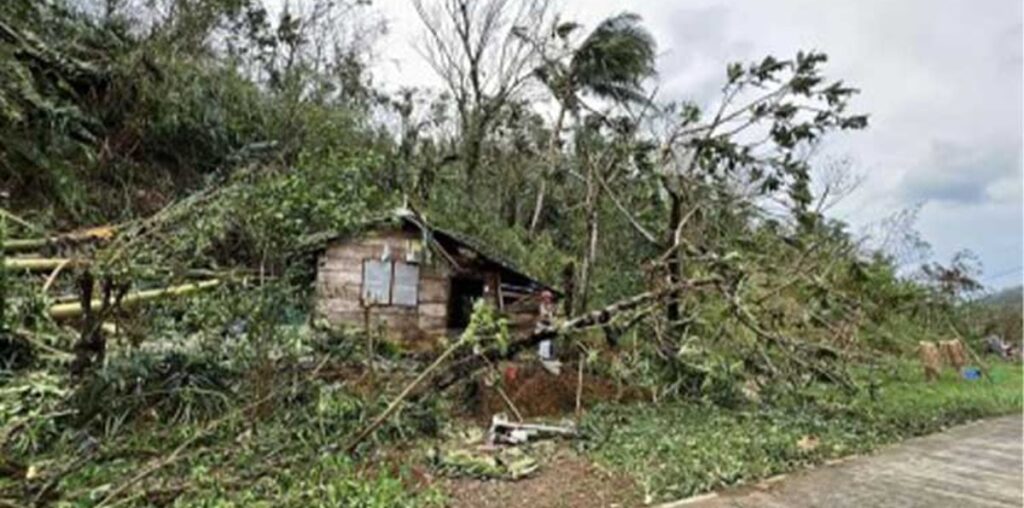MANILA – The Department of Agriculture (DA) is eyeing Kadiwa sites in areas badly affected by Super Typhoon Pepito (international name: Man-yi) to make more affordable agricultural commodities accessible.
In a phone interview Monday, DA Assistant Secretary Arnel de Mesa they will coordinate with regional and local officials.
“Doon sa mga areas na naapektuhan talaga lalo na nitong Super Typhoon Pepito, nakikipag-usap na tayo sa mga regional field offices na ma-asistehan itong mga areas na ito na malagyan ng mga Kadiwa (In areas mostly affected by Super Typhoon Pepito, we are coordinating with the regional field offices to assist these areas in putting up Kadiwa sites),” he said.
Kadiwa is the government program that allows farmers and food producers to directly sell their wares without the need for intermediaries.
De Mesa said that after consecutive weather disturbances, prices of vegetables, particularly low-land vegetables, may remain elevated for some time contrary to the usual two-week recovery time.
“Most likely, mananatiling elevated iyong presyo ng gulay. Sabi natin noon, madaling maka-recover, pero kung wala na kasunod na bagyo. Kaya lang sunud-sunod kaya it will take some time bago maka-recover (the prices of vegetables will remain elevated. We said before that it is easy to recover, but that will only happen if there are no more typhoons. They are successive ones, however, that’s why it will take some time to recover),” he said.
The most affected areas are in the Ilocos, Cagayan Valley, Cordillera, Central Luzon, Southern Luzon, Calabarzon and Bicol regions
“Medyo kakaiba iyong nangyari ngayon. Nangyari naman ito before na sunud-sunod na bagyo, pero hindi sunud-sunod na typhoon, super typhoon. Iyong dati may bagyo, may low-pressure area, nakakahinga. Ngayon talaga medyo ang hirap kasi sunud-sunod na ang lalakas (What’s happening now is somehow different. Consecutive storms have happened before but not successive typhoons and super typhoons. Before, there are typhoons, low-pressure areas, but there’s breathing space. Now it’s quite hard because these typhoons are successively strong),” he added.
For lowland vegetables, continuous increase has been monitored in Metro Manila from Oct. 31 prices.
Bitter gourd (ampalaya) now ranges from PHP130 per kilogram to PHP200/kg, higher than PHP80/kg to PHP180/kg.; eggplant at PHP150/kg to PHP220/kg from PHP110/kg to PHP130/kg; and tomato, which now ranges from PHP140/kg to PHP230/kg, higher than PHP130/kg to PHP210/kg, according to the DA-Bantay Presyo (price watch).
For highland vegetables, green and red bell pepper logged the highest price spike — green at PHP190/kg to PHP500/kg from PHP220/kg to PHP370/kg; and red at PHP280/kg to PHP450/kg from PHP370/kg.
White potatoes also increased to PHP140/kg from PHP110/kg.
The DA-Disaster Risk Reduction and Management Operations Center is still validating reports of Pepito’s impact.
“Nasa more than PHP10 billion na iyong damage before pa si (The damage has already surpassed PHP10 billion even prior to) Pepito,” De Mesa said.
The DA earlier logged PHP9.8 billion worth of damage following the onslaught of Severe Tropical Storm Kristine (Trami) and Typhoon Leon (Kong-rey), and almost PHP250 million from the effects of Typhoon Nika (Toraji) and Super Typhoon Ofel (Usagi).
For intervention, the DA allocated PHP541.02 million worth of agricultural inputs including rice and vegetable seedlings, fertilizers, and biologics for those affected by Kristine and Leon; and PHP84.88 million for Nika and Ofel-affected agri sectors.
These come alongside PHP667 million indemnification fund for insured farmers; PHP25,000 loanable amount per farmer payable for three years with zero interest; deployment of Kadiwa trucks; continuous distribution of calamity rice from the National Food Authority; and utilization of PHP1 billion quick response fund, among others. (PNA)

